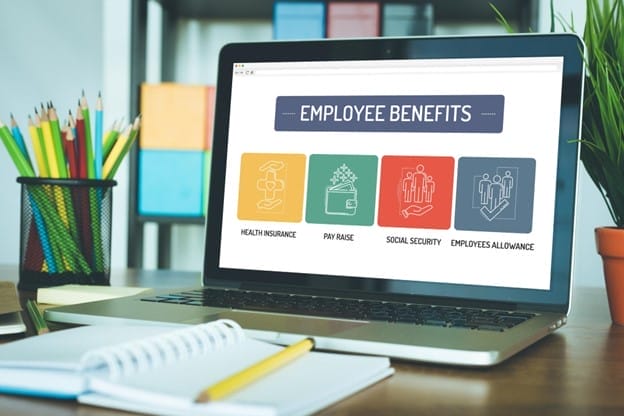Happy and engaged employees often times lead to a better workforce. Individuals who are content with their job and their work tend to be more productive, and companies are more likely to retain them long term. Companies that have a workforce of satisfied employees are best set up for success and reliable profits. This is why it can be beneficial to utilize tools and technologies in ways that support employee engagement. Employee benefits portals are one type of employee engagement technology that, when used properly, can provide a substantial return on investment for many businesses.
What Can an Employee Portal Do?
A business’s human resources (HR) professional wears many hats in supporting the business’s employees. The HR professional or department plays an essential role in assisting employees with many questions and issues that may arise. Employees in many workplaces have a wide range of questions regarding their benefits, workers’ compensation procedures, guidelines in the employee manual, pay, and more.
Employee benefits portals are an excellent solution to streamline the process of putting the information that employees want in their hands in a more accurate and efficient manner. As an online communications platform, a portal allows employees to gain assistance and access to information that will meet their needs, right at their fingertips. In addition to making information readily available, portals may optionally employ other useful tools like live, interactive chat functions and easy case tracking features to reinforce employee customer service at work. Providing employees with easily accessible support through an employee portal can enhance their experience at work and, in turn, improve employee morale and productivity.
4 Reasons Why Employee Portals Are Essential for Business Operations
Investing in tools, technologies, methods, and approaches that can improve business operations benefits everyone within all tiers of the company. These strategic investments can not only facilitate day-to-day operations, making a company run more smoothly, but may also positively impact individual employees within the company by improving their experience of accessing the information and resources they need.
The goal of any business plan is long-term survival, with sustained and even increasing profits. An employee portal is a valuable tool that many HR departments can use to uphold these objectives.
Quickly Connecting Employees With Answers to Their Questions
Instead of having to make an appointment with an HR professional, calling and leaving a message, or sending an email and waiting for a response, an employee can use their company’s portal to instantly access information pertaining to any employee benefits questions they may have. When there is less lag time between inquiring about an issue and getting the information that addresses it, an employee will generally experience less frustration. People are naturally impatient, and having to wait for assistance or deal with red tape to get to a resolution on a topic is not ideal. An interactive portal can cut many frustrating delays out of the process. Happy employees are often the best employees to have. The National Library of Medicine (NLM) hosts research publications examining this exact phenomenon.
Maximizing HR Operations
There can be substantial repetitiveness in the inquiries and questions that any HR department receives on a daily basis. As a result, the workload an HR department must manage can be extensive yet predictable. The time spent on providing boilerplate responses to recurrent inquiries can not only make an HR professional’s job tedious, but may also impede company-wide attempts to improve operational efficiency. By utilizing a portal, the time investment an HR department might otherwise make in repeatedly answering the same employee benefits questions can be slashed, freeing up time that the professionals in that department can then use on other tasks. The result is that a company’s HR professionals are now able to dedicate their full attention to higher-priority and higher-value tasks.
Keeping Up With Modern Technology Trends
The world is on an upward trend of becoming more technologically interdependent. The United States Bureau of Labor Statistics (USBLS) indicates that many occupations require the use of technology, and it is reasonable to believe that the projected need for advancing technology in the future will continue to grow. Employees not only seek, but expect, certain modern technologies to be available to them to assist them with their jobs. Time-consuming, convoluted, and antiquated systems are unlikely to prove attractive in terms of attracting the best workers or retaining them once hired.
Navigating employee retention is one of the most difficult challenges that businesses are facing. Having to re-hire and train employees is both time and cost-intensive, and it diverts resources from a business’s operations. Conversely, keeping employees thriving in a company over the long term bolsters the strength of an organization’s operating procedures, and may also enhance the company’s public reputation.
Organized and Accessible Communications
Many employees are used to using live chat or interactive help bots to obtain organized, quick, and trusted information in other areas of their lives. Having these options at work, or to navigate their employee benefits portals, can align with contemporary user-experience expectations and make for a better digital and psychological environment, fostering employee engagement.
Many advantages can be realized by implementing an employee benefits portal. An employee benefits consulting professional at Wisterm may be able to advise you regarding the optimal online software to meet your HR communication needs.




